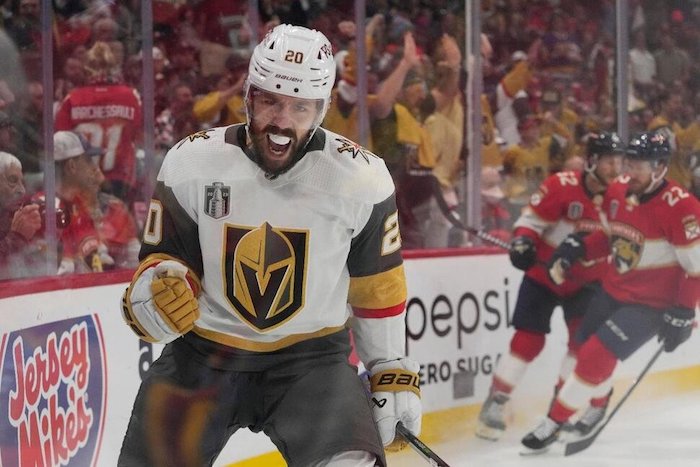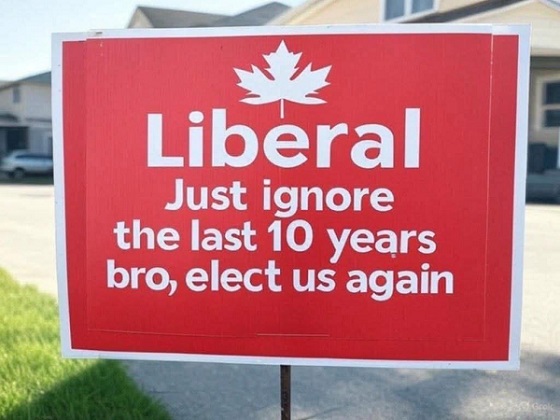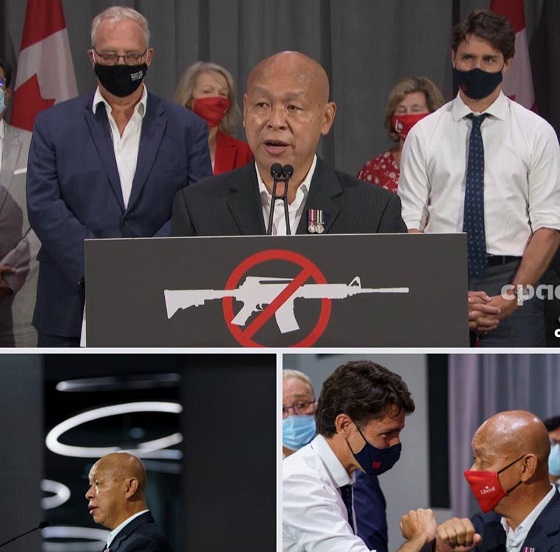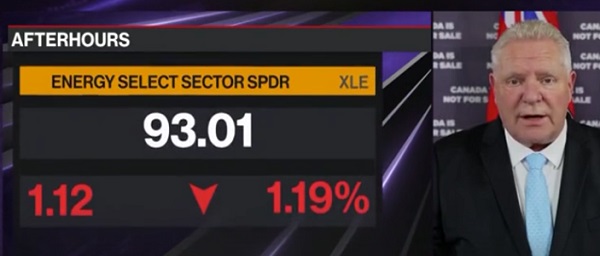Bruce Dowbiggin
LIV It Up: Why The NHL Has To Aim Higher

Stanley Cup Final Pop Quiz: How many of the players on the Final teams from Florida and Vegas are rock-solid choices make the Hockey Hall of Fame? As it stands today, with the Golden Knights prepared to close out the Panthers for their first Stanley Cup, the answer to that question could be… none?
Certainly if Florida’s Matthew Tkachuk and Vegas’ Jack Eichel put up another ten years at their current play they’d be HHoF candidates. But that’s a big if. Panthers goalie Oleg Bobrovsky’s trajectory has looked like the Leviathan roller coaster at Canada’s Wonderland. Way up. Way down. Who knows? Alex Pietrangelo will have won a Cup in St, Louis, but he’s a marginal Norris Trophy candidate.
Florida’s Eric Staal has won a Cup and is the seventh active NHL scorer, but his political problems over LGBTQ this year might hurt him. For the rest, only time will tell. Injuries and inconstancies have derailed many a player like Jonathan Marchessault or William Karlsson of the Knights in the past. Look at Mark Stone if you want to see what injuries can do to an impact player.
In fact, of the NHL’s top tier of elite players in today’s game— the sure HHoF candidates— Sidney Crosby, Evgeni Malkin, Alex Ovechkin, Jonathan Toews, Anze Kopitar, Drew Doughty and Nathan MacKinnon have lifted the Cup. But a long list of HHoF slam dunks starting with Connor McDavid, Leon Draisaitl, Auston Matthews, John Tavares, Joe Pavelski, Claudia Giroux and more are still waiting for their first Cup.

Florida Panthers defenseman Radko Gudas (7) and Vegas Golden Knights center Ivan Barbashev (49) throw punches during the third period of Game 3 of the NHL hockey Stanley Cup Finals, Thursday, June 8, 2023, in Sunrise, Fla. (AP Photo/Rebecca Blackwell)
The point being that the NHL showcase series is being decided by two teams with little legendary HHoF power. The games are tight, cramped, physical. That’s the NHL’s covenant in its expansion business plan. Keep expanding to new markets (latest estimates are two more clubs by 2025). Thin out the talent. Exaggerate the importance of fourth liners. Give goalies all the advantages. Lower the common denominator.
As HHoF Ken Dryden wrote in 2022, “All the players’ amazing skills, developed in hours of practice, visualizing and dreaming in basements, on roads and local rinks, in drills with coaches and expert teachers, their minds and hands now able to move as fast as their feet, to find and use all the open ice that is there. But with so little open ice where open ice matters, for what?”
NHL sweats will tell you that’s how it must be played. With 80 percent of the action occurring within three feet of the boards you need grinders and pluggers to win. Fair enough. There is certainly a market for it. But that style is also a restrictor on your reach. Does dumbing down the Final serve to restrict the growth of the sport at a higher level?
What if the NHL were to open up the game as Dryden suggests, letting its superstars roam? “This game, one that allows for such speed and grace, one that has so much open ice, is now utterly congested… Never in hockey’s history has a tail so wagged the dog.” Look at how the NBA, NFL and soccer market their stars globally. Now compare that to the NHL.
In the NBA’s Steph Curry era the game has been freed up from big guys clogging the middle. MVP Nikola Jokic can shoot from inside and a way outside. “If a big guy can’t pass and shoot, there’s no place for him. With big guys dispersed and away from the basket, little guys now even get rebounds… This NBA game, played on a much smaller surface than a hockey rink, is now far more open, much less congested,” writes Dryden.

Would taking Dryden’s prescription for opening up— larger nets, smaller goalie equipment— be the step toward greater creativity, making a global business model for hockey instead of more of Gary Bettman’s cash-grab expansion plans?
The question struck us last week as we saw the Saudi LIV Golf owners in effect buy out the PGA Tour after a short, nasty fight. After 18 months of sniping at the Saudi-backed scheme for debasing the product— and letting top stars like Rory McIlroy get caught up in the rhetoric— the PGA Tour suddenly folded like a cheap suit last week.

The men who’d led the PGA Tour into this rout suddenly realized they’d brought a pitching wedge to a long-drive contest. Their boosting of paydays for players who didn’t defect and the costs of legal cases was going to put the Tour into the poorhouse. If settling meant betraying all the people who’d taken their side in the dispute, not giving them fair warning of what was to come, so be it. So long as Tour commissioner Jay Monaghan got to keep his job.
As it had done with F1, the top soccer leagues and clubs in the world and even the WWE, the Saudi Sovereign Investment Fund (PIF) was telling the Tour “You can’t win. We have more money to grow the sport. Be our partners or rot in the field.” The Saudis understand global outreach in many areas, not least of which is sport, in trying to whitewash a 14th century theocracy’s brutalities. The spread of PIF-funded sport across Asia and Africa can be the first stepping that process. The returns are enormous.
The NHL, which has abandoned the Olympics and World Cup models for more pointless regular-season games, could be primed for a similar takeover. Undercapitalized and stagnant after three decades of Bettman’s cautious franchise model, the entire NHL could be bought with the PIF’s pin money. If team loyalties and histories are preserved will fans care who owns the team? Ask fans in Newcastle who’ve seen their Saudi-owned team in the Premiership vault to Top three in the table and a place in the 2024 Champions League.
From the Saudis to the collapse of cable TV, the sports model is changing everywhere. The only question is, will the NHL stick with its traditional values till the bitter end or will it embrace a creative product to restore international and Olympic hockey as the top tier?
Sign up today for Not The Public Broadcaster newsletters. Hot takes/ cool slants on sports and current affairs. Have the latest columns delivered to your mail box. Tell your friends to join, too. Always provocative, always independent. https://share.hsforms.com/16edbhhC3TTKg6jAaRyP7rActsj5
Bruce Dowbiggin @dowbboy is the editor of Not The Public Broadcaster A two-time winner of the Gemini Award as Canada’s top television sports broadcaster, he’s a regular contributor to Sirius XM Canada Talks Ch. 167. Inexact Science: The Six Most Compelling Draft Years In NHL History, his new book with his son Evan, was voted the seventh-best professional hockey book of all time by bookauthority.org . His 2004 book Money Players was voted sixth best on the same list, and is available via http://brucedowbigginbooks.ca/book-personalaccount.aspx
2025 Federal Election
Will Four More Years Of Liberals Prove The West’s Tipping Point?

The 1997 political comedy Wag The Dog featured a ruling president far behind in the polls engaging Hollywood to rescue his failing ratings. By inventing a fake war against Albania and a left-behind “hero”— nicknamed Shoe— the Hollywood producer creates a narrative that sweeps the nation.
The meme of hanging old shoes from the branches of trees and power lines catches on and re-elects the president. In a plot kicker, the vain producer is killed by the president’s handlers when he refuses to stay quiet about his handiwork. The movie’s cynicism over political spin made it a big hit in the Bill Clinton/ Monica Lewinsky days.

In the recent 2024 election the Democrats thought they’d resurrect the WTD formula to spin off senile Joe Biden at the last minute in favour of Kamala Harris. Americans saw through the obvious charade and installed Donald Trump instead.
You’d think that would be enough to dissuade Canadians who pride themselves on their hip, postmodern humour. But you’d be wrong, they don’t get the joke. Wag The Carney is the current political theatre as Liberals bury the reviled Justin Trudeau and pivot to Mark Carney. If you believe the polling it might just be working on a public besotted by ex-pat Mike Myers and “Canada’s Not For Sale”.
As opposed to Wag The Dog, few are laughing about this performative theatre, however. There are still two debates (English/ French) and over three more weeks of campaign where anything— hello Paul Chiang—can happen. But with Laurentian media bribed by the Libs— Carney is threatening those who stray— people are already projecting what another four years of Liberals in office will mean.
As the most prominent outlier to Team Canada’s “we will fight them on the beaches…” Alberta’s premier Danielle Smith is already steering a course for her province that doesn’t include going to war with America on energy. She asked Trump to delay his tariffs until Canadians had a chance to speak on the subject in an election April 28. Naturally the howler monkeys of the Left accused her of treason. She got her wish Wednesday when Canada was spared any new tariffs for the time being.

Clearly, she (and Saskatchewan premier Scott Moe) have no illusions about Carney not using their energy industry as a whipping post for his EU climate schemes. They’ve seen the cynical flip in polls as former Trudeau loyalists hurry back to the same Liberal party they abandoned in 2024. They know Carney can manipulate the Boomer demographic just as he did when he called for draconian financial methods against the peaceful Truckers Convoy in 2022.
Former Reform leader Preston Manning is unequivocal: “’Large numbers of Westerners simply will not stand for another four years of Liberal government, no matter who leads it.’“ So how does the West respond within Confederation to protect itself from a predatory Ottawa elite?
Clearly, the emissions cap— part of Carney’s radical environmental plans— will keep Alberta’s treasure in the ground. With Carney repeating no cancellation of Bill C-69 that precludes building pipelines in the future, the momentum for a referendum in Alberta will only grow. The NDP will howl, but there will be enough push among from the rest of Albertans for a new approach within Canada.
In this vein Smith even wants to approach Quebec. While it seems like odd bedfellows the two provinces most at odds with the status quo have much in common . “This is an area where our two provinces may be able to coordinate an approach,” Smith wrote this week. That could include referendums by the middle of 2026.
Perhaps the best recipe for keeping the increasingly fractious union together is a devolution of power, not unlike that governing the United Kingdom. While Westminster remains the central power since 1997, there are now separate parliaments in Scotland, Wales and Northern Ireland that put power closer to the citizen, so that local factors are better recognized in decision making.
With so little uniting the regions of the country any longer, devolution might provide a solution. What form could decentralization take within Canada? A Western Canada Parliament could blunt predatory federal energy policies while countering the imbalances of Canada’s equalization process. Similar parliaments representing Quebec, the Atlantic provinces, Ontario and B.C. would protect their own special interests within Canada. Ottawa could handle Canada’s international obligations to defence, trade and international cooperation.
While the idea is fraught with pitfalls it nonetheless remains preferable to a breakup of the nation, which four more years of Liberals rule under Mark Carney and the same Trudeau characters will likely precipitate. Smith’s outreach case would be the beginning of such a process.
None of this would be necessary were the populations of Eastern Canada and B.C.’s lower mainland remotely serious after snoozing through the Trudeau decade. The OECD shows Canada’s 1.4% GDP barely ahead of Luxembourg and behind the rest of the industrialized world from 2015-2025. As we’ve said before the Boomers sitting on their $1 million-plus homes are re-staging Woodstock on the Canada Pension and OAS. As with Wag The Dog, they’re not getting the joke.

When the Boomers award themselves another four years of taxapalooza and Mike Myers and the other “Canada Not For For Sale” celebs head south to their tax-avoidance schemes how will the Boomers say they’ve left Canada better off for anyone under 60? We’ll hang up and listen to your answer on the TV.
Bruce Dowbiggin @dowbboy is the editor of Not The Public Broadcaster A two-time winner of the Gemini Award as Canada’s top television sports broadcaster, his new book Deal With It: The Trades That Stunned The NHL And Changed hockey is now available on Amazon. Inexact Science: The Six Most Compelling Draft Years In NHL History, his previous book with his son Evan, was voted the seventh-best professional hockey book of all time by bookauthority.org . His 2004 book Money Players was voted sixth best on the same list, and is available via brucedowbigginbooks.ca.
Bruce Dowbiggin
Are the Jays Signing Or Declining? Only Vladdy & Bo Know For Sure

We were watching the Los Angeles Dodgers home opener on Thursday. The defending World Series champs came from behind to beat Detroit 5-4. The big hit was a three-run homer from a player named Teoscar Hernandez off AL Cy Young winner Tarik Skubal

If that name sounds familiar, Teoscar was a Toronto Blue Jay from 2018-2022. He pounded 121 homers in the span as part of the Jays’ order. But when Toronto decided it needed bullpen help he was traded to Seattle in 2022 for pitchers Erik Swanson and Adam Macko. While Swanson has battled injuries and Macko is no-go, Hernandez keeps pounding the ball.
In his one year in Seattle he had strikeout problems but did hit 26 homers with 93 RBIs. In the winter of 2023-24 he signed as a free agent with the aforementioned Dodgers. Batting behind Shohei Ohtani he launched 33 homers and 99 RBIs. He won the All Star Home Run Derby. His key hit in Game 5 of the World Series propelled L.A. to the title. The stacked Dodgers liked him enough to give him a three-year, $66 million contract.
Why are we telling you this? Because the Blue Jays also started their 2025 season at home, matched against the Baltimore Orioles. And while there are reasons to believe the Jays will not replicate their 74-win disaster of 2024, there remain the old bugaboos of injuries and pitching. In the four games against the division rivals they need to beat, Jays’ pitching gave up 24 runs while scoring 18—nine of them in one game.
The splashy acquisition of 40 year old HOF pitcher Max Scherzer has already gone sideways as a bad thumb has put him on the IL. The new stopper, Jeff Hoffman, was rejected on medical grounds by two other teams before Toronto’s money made him healthy. The rest of the bullpen— a disaster in 2024— got off to a rocky start with Orioles hitters playing BP against them. They’ve already DFA’d one pitcher and called up two more from the minors. The re-made pen performed well in Game 4, but how it holds up in their next 158 games is a mystery.
On offence, while their rivals in Boston and New York added sexy pieces to their rosters the Jays were only able to acquire veteran switch-hitting Baltimore slugger Anthony Santander. More typical of their other signees is ex-Cleveland 2B infielder Andres Giminez who in 2023 had the lowest average exit velocity of all AL batters (84.8 mph), and led the AL in percentage of balls that were softly hit (21.7%). He does play a slick second base.
The winter story line for the Jays offence was what to do about Vladimir Guerrero Jr. and Bo Bichette, the erstwhile star-dust twins who were— along with Cavan Biggio— supposed to guarantee titles when they emerged in 2019. Biggio is gone, so the other two carry the credibility of the management team of Mark Shapiro and Ross Atkins. From the outside the Jays seem paralyzed to act.

While the Jays dithered, the price for players like Guerrero and Bichette soared. Using Juan Soto’s Mets $765 M deal as a yardstick Guerrero turned down a Jays offer of just under $600 M, saying he was done talking during the season. If Shapiro/ Atkins had anticipated the market Guerrero would have cost a lot less in 2023-24. If there is no progress by the trading deadline the Jays will be forced to get what they can in a trade.
Shortstop Bichette— a gifted player who battled injuries in 2024—is likewise up for a new deal. He has started strong in 2025 and would command a handsome return in a trade. He says the Jays are waiting to see what happens with Guerrero first. Having sold the pair for years to their loyal fans, having to trade them will be a massive PR blow. And while Jays’ national audience can be an advantage, having a whole country pissed with you is devastating.
The rest of the secret sauce for a Toronto comeback revolves around one of their hitting prospects taking a step forward. Any/ all of Will Wagner, Alan Roden, Addison Barger or Leo Jimenez can have a job if they show their bats are for real. Otherwise Shapiro and Atkins will hope that Dalton Varsho, George Springer and Alejandro Kirk can find a little magic in their aging bats.
A failure to retain talent may prompt fans to recall that Rogers decided that Shapiro and Atkins, who dumped Teoscar, were worthy replacements for the previous GM who’d walked away. The man Schneider and Atkins were hired to improve upon— Canadian Alex Anthopoulos— has made the Atlanta Braves a dominant team. Since AA moved to Atlanta they’ve won 90, 97, 38 (Covid year), 88, 101, 104, 109, 89 games. They’ve won a World Series and two other playoff series. They won six straight NL East titles before injuries sank them last year.
The Braves have developed young everyday superstars like Ronald Acuńa Jr. who don’t get picked off second base. They have built a pitching staff largely from within, not splashy FA signings. They have swagger without cockiness. They are set for years to come.
The Blue Jays? Since AA left they’ve won 73, 67, 32 (Covid), 91, 92, 89, 74 games. They’ve won zero postseason games while missing the playoffs in four seasons. The players they traded are starring for other teams in the postseason. They are again employing an inexperienced company guy as manager.
While it’s true that the sun can’t shine on the same team every day, Jays fans believe it would be nice if the great orb would find their club as it did back in the 1992/93 World Series days. Instead of the reflected glory of past stars winning for other teams. Patience is thin. And time is ticking.
Bruce Dowbiggin @dowbboy is the editor of Not The Public Broadcaster A two-time winner of the Gemini Award as Canada’s top television sports broadcaster, his new book Deal With It: The Trades That Stunned The NHL And Changed hockey is now available on Amazon. Inexact Science: The Six Most Compelling Draft Years In NHL History, his previous book with his son Evan, was voted the seventh-best professional hockey book of all time by bookauthority.org . His 2004 book Money Players was voted sixth best on the same list, and is available via brucedowbigginbooks.ca.
-

 2025 Federal Election2 days ago
2025 Federal Election2 days agoMORE OF THE SAME: Mark Carney Admits He Will Not Repeal the Liberal’s Bill C-69 – The ‘No Pipelines’ Bill
-

 2025 Federal Election2 days ago
2025 Federal Election2 days ago‘Coordinated and Alarming’: Allegations of Chinese Voter Suppression in 2021 Race That Flipped Toronto Riding to Liberals and Paul Chiang
-

 2025 Federal Election1 day ago
2025 Federal Election1 day ago‘I’m Cautiously Optimistic’: Doug Ford Strongly Recommends Canada ‘Not To Retaliate’ Against Trump’s Tariffs
-

 Business1 day ago
Business1 day agoCalifornia planning to double film tax credits amid industry decline
-

 Alberta2 days ago
Alberta2 days agoEnergy sector will fuel Alberta economy and Canada’s exports for many years to come
-

 Business1 day ago
Business1 day agoCanada may escape the worst as Trump declares America’s economic independence with Liberation Day tariffs
-

 Alberta1 day ago
Alberta1 day agoBig win for Alberta and Canada: Statement from Premier Smith
-

 2025 Federal Election2 days ago
2025 Federal Election2 days agoDon’t let the Liberals fool you on electric cars





